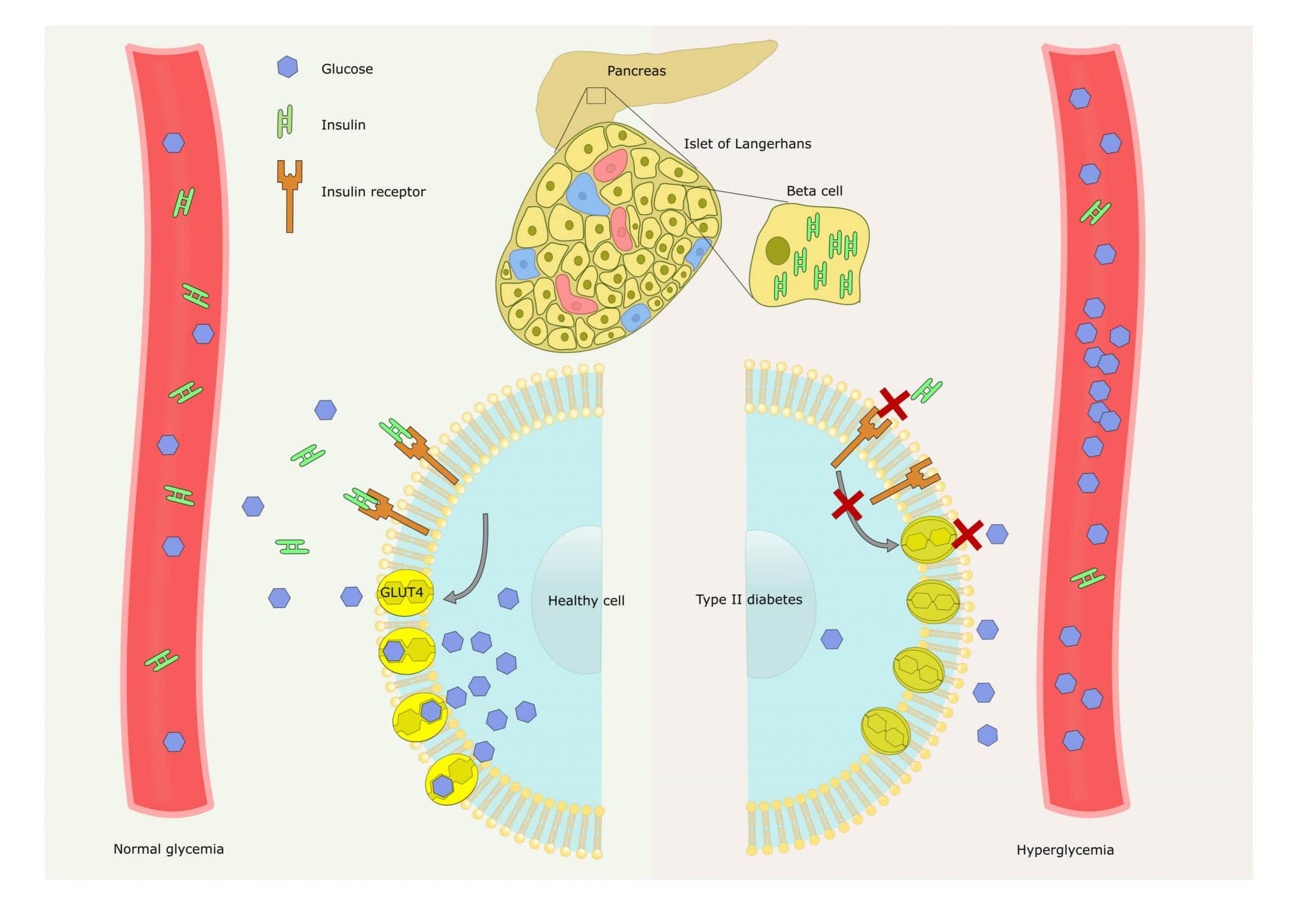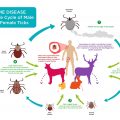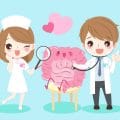Insulin resistance: hair loss and diet
Discover the importance of diet to combat insulin resistance hair loss
In this article, we discuss the importance of diet and insulin resistance hair loss:
- Discover the importance of diet to combat insulin resistance hair loss
- Hair Loss and Glycaemic Loads
- Insulin resistance and Hair Loss: How Diet Causes androgenetic alopecia
- Dihydrotestosterone (DHT)
- Metabolic syndrome and medical conditions
- Importance of diet on insulin resistance
- Healthy fats are good for your health
- Healthy fats are not making you fat! They are suitable for you and help you combat insulin resistance
- What is insulin resistance?
- Undetected Insulin resistance leads to type 2 diabetes
- Insulin resistance and hair loss
- Insulin, SHBG, and DHT TIPS to lower your daily Glycaemic Intake v
- Consume a diet plan that is right for your body type
 Insulin is a vital hormone used by your body to regulate blood sugar levels. Your blood sugar levels can affect various systems of your body, including how your body stores fat, the health of your heart, and your ability to grow hair.
Insulin is a vital hormone used by your body to regulate blood sugar levels. Your blood sugar levels can affect various systems of your body, including how your body stores fat, the health of your heart, and your ability to grow hair.
A study by the European Journal of Cardiovascular Risk found a correlation between insulin resistance in women and androgenic alopecia (AGA), or female pattern baldness.
Hair Loss and Glycaemic Loads
Research continues to prove that processed food contributes to hair loss as they have a high glycaemic load. Cooking with a high glycaemic amount tends to raise your blood sugar levels after eating. Other research indicates that male baldness has a correlation to insulin resistance. They even state that insulin resistance can be diagnosed visually by baldness.
Insulin resistance and Hair Loss: How Diet Causes androgenetic alopecia
You’ve probably heard of male pattern baldness (androgenetic alopecia), which is a condition that many people (men and women) deal with. Some experience it at earlier ages than others.
Traditionally, male pattern baldness was thought to be related to genetics; passed down through the bloodline. More recently, evidence has been discovered between hair loss, insulin resistance and metabolic syndrome.
Dihydrotestosterone (DHT)
Recent studies ((e.g. this one, this one, and this one) indicate that metabolic syndrome and insulin resistance can be predicted by an early onset of male pattern baldness. The two conditions appear to be linked, and research on this continues.
Dihydrotestosterone (DHT) is a male hormone. When an individual suffers from male pattern baldness, DHT appears to attach itself to their hair follicles. When this happens over an extended period, it reduces the size of hair follicles, even to the point that they stop functioning. This process also stops new hair growth.
Metabolic syndrome and medical conditions
Metabolic syndrome affects more and more of the population as we begin to rely more heavily on processed foods and less healthy diets.
Below is a list of medical conditions that are related to metabolic syndrome:
- Hyperglycaemia (high blood sugar)
- High serum triglycerides
- Hypertension (high blood pressure)
- Low HDL (“good” cholesterol) levels
- Obesity
Insulin resistance treatment with adapting your diet
Importance of diet on insulin resistance
Your diet and the food you eat has an impact on three factors that influence male pattern balding: insulin, metabolic syndrome and DHT. Some foods that you eat will raise your insulin levels. These reactions then increase the amount of DHT in your system as well. Foods that increase your insulin levels are also likely to lead to metabolic syndrome.
Healthy fats are good for your health.
Have you ever heard of the concept’ good fats’? Polyunsaturated, omega 3 and 6 and fatty acids are right for you. Further, by eating linoleic and linoleic acids, you can raise your HDL levels. Interestingly, these fats are also 5-alpha-reductase inhibitors. 5-alpha-reductase is what turns testosterone into DHT. DHT causes hair loss.
So low dietary levels of HDL may lead to more 5-alpha-reductase, which can result in higher DHT. This, in turn, may result in more hair loss
Conjugated linoleic acid (CLA) or fatty acid called linoleic acid can be found in dairy, beef and butter. (I don’t eat dairy, it makes me feel awful) We need to absorb them through our diet as the body is unable to assimilate these fatty acids.
Butter, beef, red meat, fat, etc. cause fear in many people’s mind for weight gain, heart attacks, etc. However, the reality is that high-quality, healthy fats are exquisite for you.
Healthy fats are not making you fat! They are suitable for you and help you combat insulin resistance.
It is a misconception that healthy fats are making you fat. Fats are great for fat-burning, building muscles, bone-building, fighting cancer, etc. In the last few years, I’ve increased the number of healthy fats I eat. I can honestly say my weight has never been so stable. Bear in mind that I DON’T diet or count calories. In fact, I’m consuming more calories than ever before!
To stay healthy, the human body needs three types of fats. Saturated, (yes!!) polyunsaturated omega-3 fatty acids and polyunsaturated omega-6 fats. These different fats all have various jobs, from digestion to brain functions. (fish, meat, seeds, nuts)
As with everything, quality is essential. Especially when we consume animal products and I only eat grass-fed animals.
What is insulin resistance?
The term “insulin resistance” is being discussed more and more when it comes to health. It is a medical condition in which the cells of the body no longer respond to insulin as they should.
Your body uses insulin to keep your blood sugar levels at the normal range. When you consume sugars or carbohydrates, they turn into glucose within your body. In response, your body releases the insulin needed to infuse glucose into every cell of your body.
Undetected Insulin resistance leads to type 2 diabetes.
When your body becomes resistant to insulin (insulin resistance), your cells aren’t able to receive the glucose they need for energy. And instead of being distributed to your cells, insulin remains in your blood, at very high levels. Your body naturally releases more insulin in response to elevated blood sugar levels, and a cycle begins. Undetected, this cycle leads to type II diabetes.
Insulin resistance and hair loss
Our hair has difficulties with continuing changes in the blood sugar. Furthermore, it can’t cope with the continuous highs and lows, which may interrupt the growth cycle. For this reason, it’s likely that insulin resistance may cause hair loss. Hair is one of the first noticeable areas that show the body is suffering from something.
Primitive cultures didn’t have access to this kind of food that is causing these highs and lows. For instance, and Inuit’s diet consists mainly of fats and fish. Obviously, they wouldn’t undergo such swings.
Hormones within the human body interact with one another. When certain hormones change (increase or decrease), other hormones are affected. Besides, they can change as well in response.
Get tested before it’s too late!
As you can see, the link between early-onset male pattern baldness and insulin resistance could lead to a more severe condition, like diabetes. Therefore, those with early-onset male pattern baldness should get tested for type II diabetes and insulin resistance during their regular health check-ups.
Insulin, SHBG, and DHT
Men and women who suffer from hair loss have been found to have low levels of sex hormone-binding globulin (SHBG). A correlation has also been established between insulin and SHBG that when insulin levels are high, SHBG levels are low.
When SHBG levels are high, DHT levels tend to be low because SHBG binds to DHT. This prevents DHT from binding to androgen receptors the way it should. These reactions leave less DHT to bind to hair follicles, leading to hair loss.
TIPS to lower your daily Glycaemic Intake
Further, the Glycaemic Index is used to count the carbohydrate intake per serving. On top of that, processed food with a high glycaemic load is devoid of enzymes. They are also the primary cause of many diseases and health problems, including hair loss.
Also, to keep your body healthy, your mind stable and your energy high, eat food (and drink) with a low GI load. Go for whole, natural foods, healthy fats, meats, fish, vegetables, nuts, bone broth, etc.
Consume a diet plan that is right for your body type
Lastly, remember also to eat food that’s right for your body type as we’re all different, and our bodies need different things.
Keep making efforts to lower the amount of GI load in your diet every single day.
For more information to help you determine how much GI is in specific food visit: www.glycemicindex.com
If you would like to read about the 55 hair loss causes, please ensure to check out this link.
Or to discover more information about optimal health and living a holistic lifestyle, click here.
Let me help you right now!
Receive YOUR Welcome Kit that includes a wide range of topics, from simple and easy healthy brain recipes to clean living, ditching toxic chemicals with loads of practical advice that you can implement immediately
.




